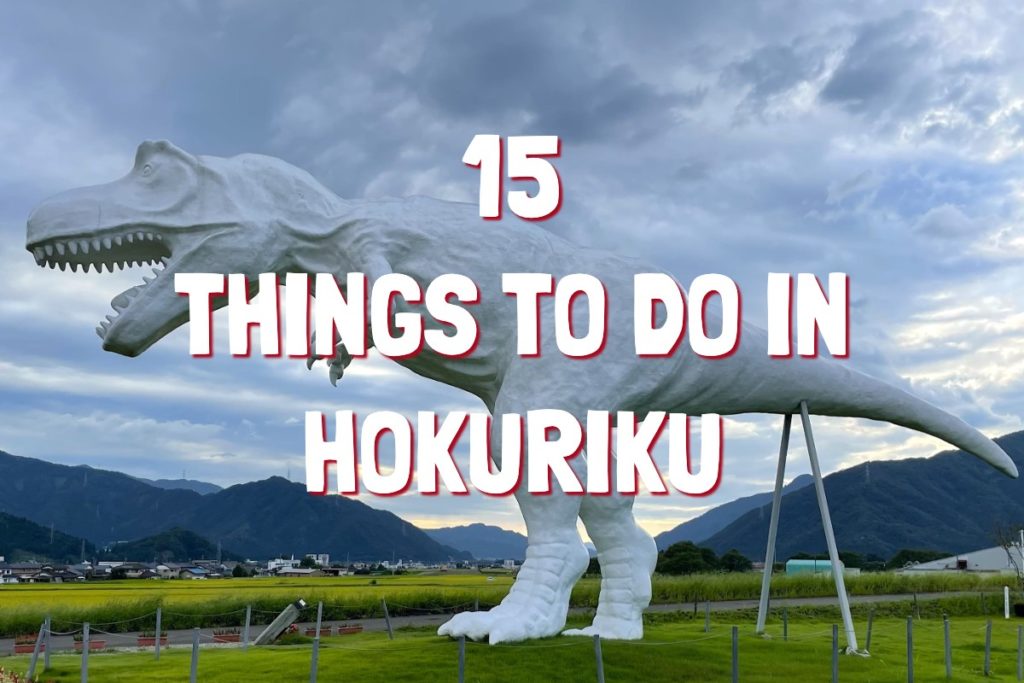Whitesaurus (Katsuyama City, Fukui)
What is Hokuriku? The Hokuriku area is a smaller subset of Chubu, one of the 5 main regions of Japan; including Tohoku, Kanto, Chubu, Kansai, and Chugoku. The three Prefectures of Ishikawa, Fukui, and Toyama make up the region. Hokuriku has the best of both worlds, with both beautiful coastlines on the western side as well as ranges of mountains along the eastern side. With picturesque towns, rich cultural history, mouthwatering local delicacies, beautiful hiking trails, and parks, it is filled with tons of activities and experiences to try.
In this article, we would like to introduce our top 15 experiences you can enjoy in the Hokuriku area. The recommendations in this article are written by a member of the Sakura Mobile blog team who has traveled extensively in the Hokuriku area, so we can confidently recommend them based on personal experience. We hope you enjoy the charms of Hokuriku just as much as we do!
Have you booked your SIM card or pocket WiFi for your trip to Japan yet?
In Japan, you’ll want to be connected without missing out on high speed data and internet!
By reserving online before departing, you can
- Lower your rental fees
- Avoid stock shortages at the airport
To learn more about data and WiFi options for your trip, check out our products below.

Hello readers! Sakura Mobile is a SIM & WiFi service provider for international residents and tourists in Japan.
Our global editorial team living in Japan will introduce the charms of the country based on what we have actually experienced and felt.
Table of Contents
Hiking in Hokuriku
If you find yourself in the Hokuriku area, you absolutely can’t miss out on these amazing scenic hiking trails. You can visit both Mt. Tateyama and Mt. Hakusan which along with Mt. Fuji, make up the three most sacred mountains in Japan. There are hikes for both the beginner and the more seasoned mountaineers, so give one a try! The views are absolutely unforgettable.
Tateyama Kurobe Alpine Route (Toyama)
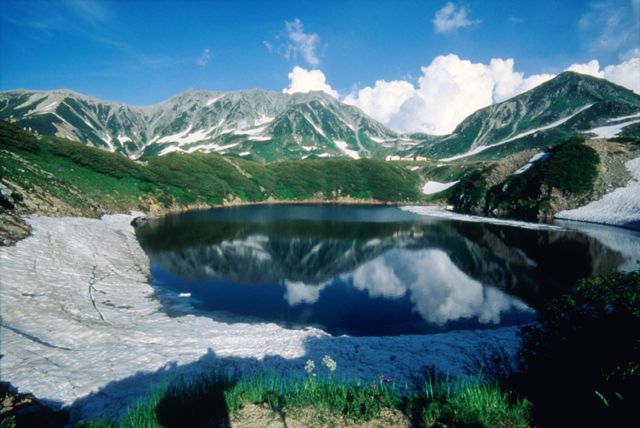
Located in Toyama Prefecture, the amazing views along the Tateyama Kurobe Alpine Route are both majestic and awe-inspiring. For those who are less inclined to long hikes, you can enjoy the huge “Snow Corridor” on the way to Murodo Station. As the region has heavy snow you can enjoy walking along the impressive towering snow on both sides of you, or walk along on top of the wall and enjoy the panoramic view of the surrounding mountains. The walls can get up to 20 meters in height and is about 500 meters long. Even the transportation to Murodo is unique, from the very steep ropeway up to a higher platform to the scenic bus ride up to the 3000-meter heights of the station.
After arriving at Murodo station, you can enjoy the nearby Tateyama Nature Conservation Center and learn about the local fauna such as the Raicho “Lightning Birds” (Ptarmigan) as well as the rich history of the area in addition to the Snow Corridor. A mere 15-minute walk away you can enjoy the breathtaking views of Mikurigaike nestled between the surrounding mountains, but also bathing in the hot springs in the Mikurigaike Lodge.
Information
- Price: from Dentetsu-Toyama station 4,390 JPY/adult one-way (to Murodo)
- Address: from Toyama Prefecture’s Tateyama Station to Nagano Prefecture’s Ogizawa Station (Google MAP)
- Season: the Snow Corridor: mid-April to mid-June, Alpine Route: mid-April to November
- Visit Official Site and Learn More Here
↑ Go back to the table of contents
Mt. Hakusan (Ishikawa/Gifu)
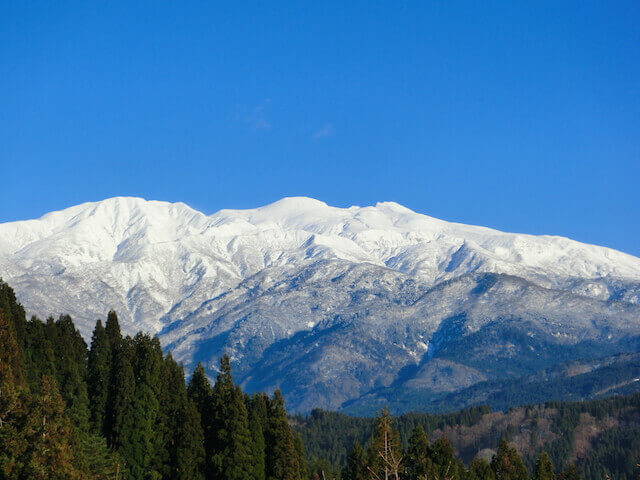
Located within Hakusan National Park, spanning across the four prefectures of Ishikawa, Fukui, Gifu, and Toyama, this mountain’s name literally means “white mountain” as the peaks are covered with snow even into the summer. Mt. Hakusan, like Mt. Tateyama, is actually the name for several peaks of the area’s mountain range. Like many mountains in Japan, Mt. Hakusan is formed from a volcano, which in most recent history erupted in 1659, and remained dormant since then, but is still classified as an active volcano. Due to this, you can enjoy several local hot springs around the base area of the park to soak and relax after your hike.
There are a range of trails ranging from short day hikes to several day hikes for more experienced hikers. The park itself is a designated UNESCO Biosphere Reserve and hosts a variety of plants and wildlife. While on the mountain trails you can enjoy the beautiful alpine meadows full of colorful local wildflowers. The mountain is home to many animals, such as the extremely cute Japanese stoat (a kind of weasel), “kamoshika” or Japanese serow, a type of horned goat-antelope, various birds including golden eagles, foxes, and even Asiatic black bears. Although the bears are not commonly seen by hikers, it is recommended to carry a bell or radio for protection.
Information
- Price: –
- Address: Shiramine, Hakusan, Ishikawa 920-2501, Japan (Google MAP)
- Season: July to October
- Visit Official Site
↑ Go back to the table of contents
Mt. Arashima (Fukui)
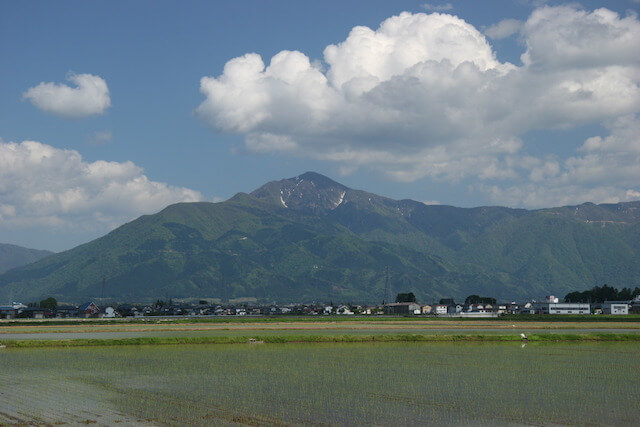
This mountain range is located in Fukui Prefecture and is one of the “hyakumeisan” top 100 mountains of Japan. While it also offers a variety of hikes, it is perfect for those looking for a shorter half-day hike. From the top, you can see the previously mentioned Mt. Hakusan, among various other mountains, and Fukui’s natural scenery. While the mountain is located in a more rural area of Fukui and is harder to access, it is great for the adventurous hiker looking for a more peaceful and less populated hike.
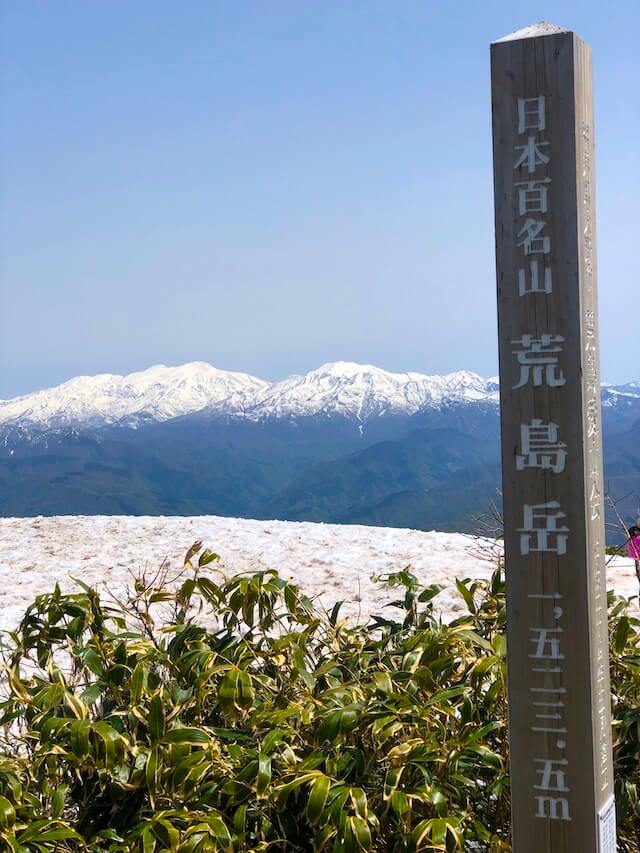
Information
- Price: from Fukui station 860 JPY/person (to Kadohara station)*
- Address: Hotokebara, Ono, Fukui 912-0153, Japan (Google MAP)
- Season: Year-round, although April to November is recommended
- Visit Official Site (Japanese)
***Note that the last train leaving Kadohara to Fukui station is very early (6:41 pm), so remember to check and make sure to be back in time; alternatively you can rent a car
↑ Go back to the table of contents
Karikomi-ike (Fukui)
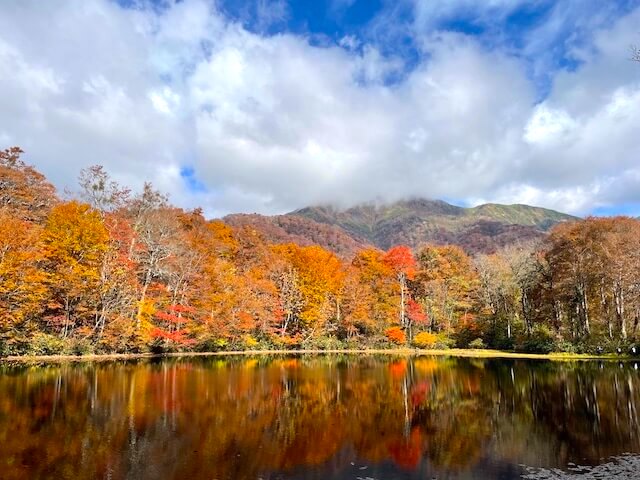
For amazing autumnal views and options for day hiking and camping, the mountainous pond of Karikomi is a great local treasure. Located in the mountains of Ono, Fukui Prefecture, you can enjoy the mirror-like effect of the splashes of red, orange, yellow, green, and white in the surrounding mountains and the blue sky reflected clearly on the pond. While considered most beautiful in fall, it is still picturesque and a fun hike for spring and summer. For those interested in bird watching, this mountain trail offers many opportunities to observe and listen to various local birds.
Information
- Price: –
- Address: Kamiuchinami, Ono, Fukui 912-0151, Japan (Google MAP)
- Season: September to November for Autumn Tree Viewing
- Visit Official Site (Japanese)
↑ Go back to the table of contents
Sightseeing in Hokuriku
Tulip Festival (Toyama)
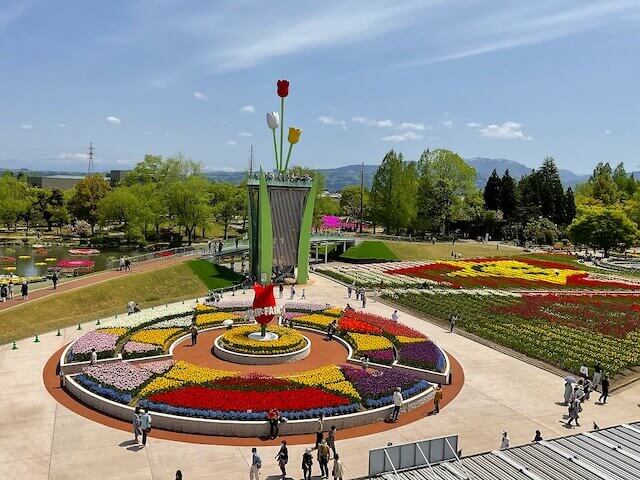
Have you ever been to a tulip festival? The Tonami Tulip Fair in Tonami City, Toyama Prefecture is definitely worth a visit! It hosts a multitude of events within the Fair itself, so both Tulip lovers and even those unfamiliar with flowers will find something to enjoy. The fair itself only runs for about two weeks from the end of April to early May, so be sure to catch it before it ends. Within the flower-shaped gates, not only can you find over 3 million tulips in 300 varieties in colorful and unique displays indoors in the Tonami Tulip Gallery as well as around the park, but you can also visit Tonami Art Museum, Tonami Provincial Museum, Tonami Cultural Hall and the Old Nakashima House with the fair ticket. If you get hungry while wandering around, you can find a multitude of “yatai” Japanese food stalls, selling various treats such as French fries, shaved ice, Japanese-style fried chicken “kara-age”, and even tulip-flavored ice cream. During the 2022 Tulip Festival, there was even a scavenger hunt (all in Japanese)! If you decide you can’t get enough of the flowers, you can buy flowers or tulip bulbs to take home and grow yourself.
Information
- Price: 1,300 JPY/adult
- Address: 1-32 Hanazonomachi, Tonami, Toyama 939-1382, Japan (Google MAP)
- Hours: Fair: 8:30 am to 5:30 pm (last entry 5:00 pm), free shuttle bus from JR Tonami Station: 8:30am-4:30pm
- Visit Official Site
↑ Go back to the table of contents
Fukui Prefectural Dinosaur Museum (FPDM) and Katsuyama Dinosaur Forest Park (Fukui)
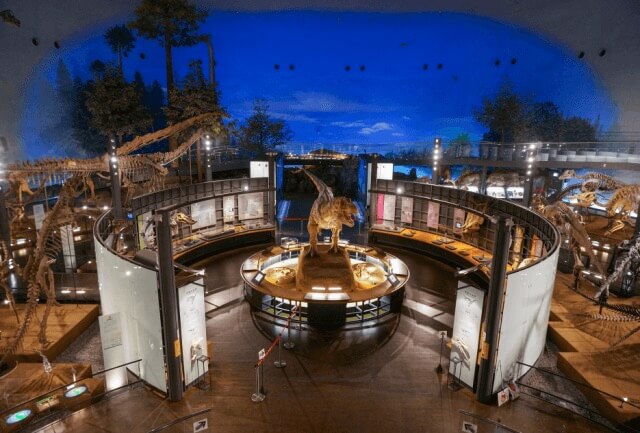
Dinosaur lovers worldwide haven’t been to a dinosaur museum until they have been to the Fukui Prefectural Dinosaur Museum. Located in Katsuyama City, Fukui Prefecture, you can enjoy seeing dinosaur fossils found right in Fukui. In fact, most of the dinosaurs excavated in Japan (over 80 percent!) came from Fukui Prefecture. You can even see several dinosaurs first discovered in Fukui and are charmingly named aptly after the region, such as Fukuisaurus, Fukuiraptor, Fukuivenator, and Fukuititan.
The museum itself looks like a giant silver egg, which you can see glinting mysteriously from the surrounding mountains in Katsuyama. While the museum itself has 3 floors and tons of interactive exhibits, over 42 full-body fossils, and reproductions, there are also several dinosaur robots in the museum ready to surprise unwitting visitors.
Outside the museum, you can visit the Dinosaur Quarry, where actual dinosaurs have been discovered and excavated, and you can try your hand at excavating fossils. For those more into seeing what life with dinosaurs in the wild was like, you can enjoy walking through the Katsuyama DinoPark and see various dinosaur robots in the local nature.

Information
- Price: (Reservations Needed) Museum: 730 JPY/adult 260 JPY/child, Dino Quarry: 1,050 JPY/adult 530 JPY/child, DinoPark: 600 JPY/person
- Address: 51-11 Murokocho Terao, Katsuyama, Fukui 911-8601 (Google MAP)
- Season: Year-round
- FPDM Official Site and DinoPark Official Site
↑ Go back to the table of contents
Tojimbo Cliffs (Fukui)
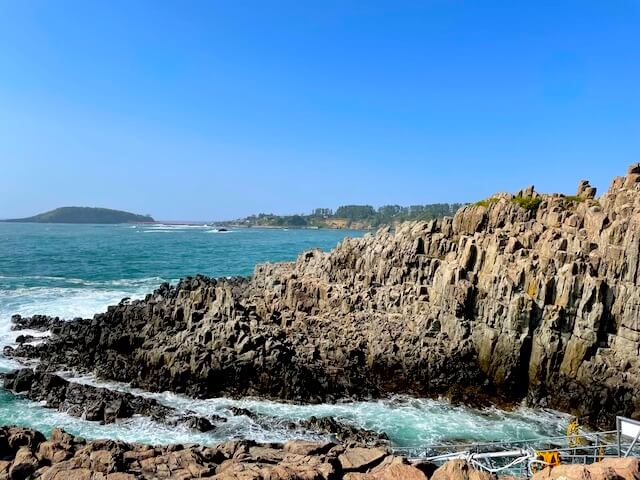
Located along the east coast of Fukui in Mikuni, you can see the naturally occurring rugged rock cliffs from various vantage points jutting across the Sea of Japan, and those feeling more adventurous can climb on top and get right to the edge! Just be careful not to fall, as it’s a long way down. To visit the cliffs themselves is free, but a paid boat tour is also available. On the walk up to the cliffs, you will pass by many shops selling local seafood such as grilled squid sticks, local delicacy Echizen crab, fresh sashimi, as well as all the flavors of ice cream one could ever want including black sesame, or seasonal favorites like peach, chestnut, and sweet potato. One shop even sells squid ink-flavored ice cream!
Information
- Price: Boat tour: 1,500 JPY/adult, 750 JPY/child
- Address: 64-1 Mikunicho Anto, Sakai, Fukui 913-0064, Japan (Google MAP)
- Season: Tojimbo Cliffs: Year-round, Boat tour: 9:00 am to 4:00 pm
- Visit Official Site
↑ Go back to the table of contents
Kenrokuen Garden (Ishikawa)
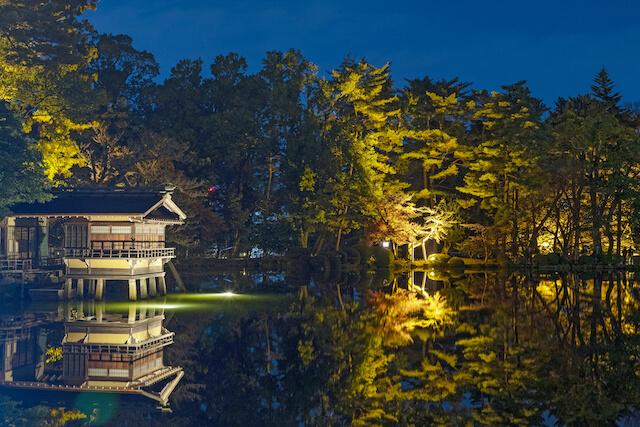
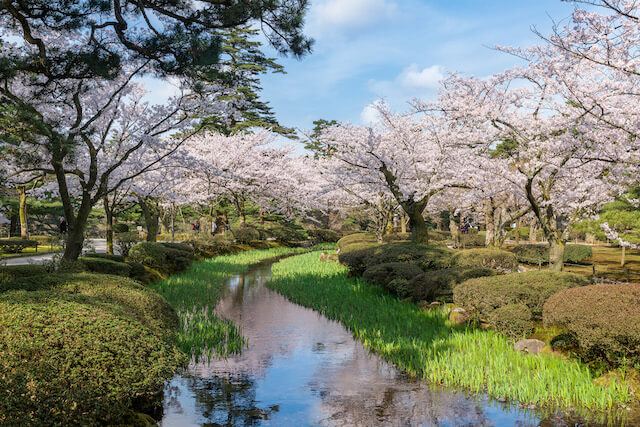
A central park in Kanazawa city embodying the characteristics of traditional Japanese gardens. This strolling landscape garden is not only extremely quiet and peaceful but is huge, covering over 25 acres as a perfect haven of nature and calm inside the busy Metropolitan of Kanazawa. It offers spectacular views year-round, so it’s worth coming back again and again to see the different views of the garden across the four seasons. The garden has several tea houses and connects to the Kanazawa Castle Park as well. Several points of interest; the Ishikawa Prefectural Museum of Art, the 21st Century Museum of Contemporary Art, and Ishiura Shrine (the oldest Shinto shrine in Kanazawa) are within close walking distance to Kenrokuen.
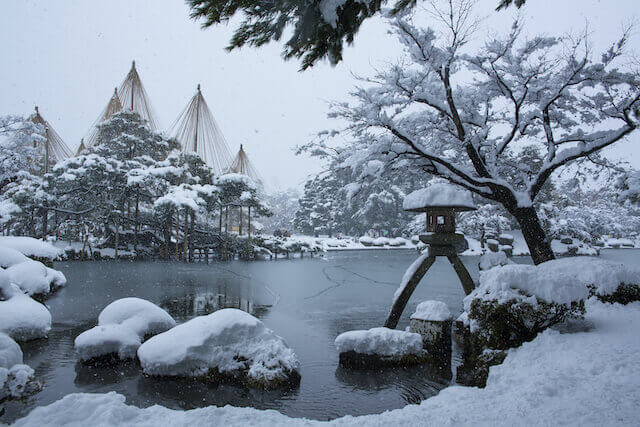
Information
- Price: 320 JPY/adult, 100 JPY/child
- Address: 1 Kenrokumachi, Kanazawa, Ishikawa 920-0936, Japan (Google MAP)
- Hours: March – mid-October: 7:00 am to 6:00 pm, mid-October – February: 8:00 am to 5:00 pm
- Visit Official Site
↑ Go back to the table of contents
Eiheiji Temple (Fukui)
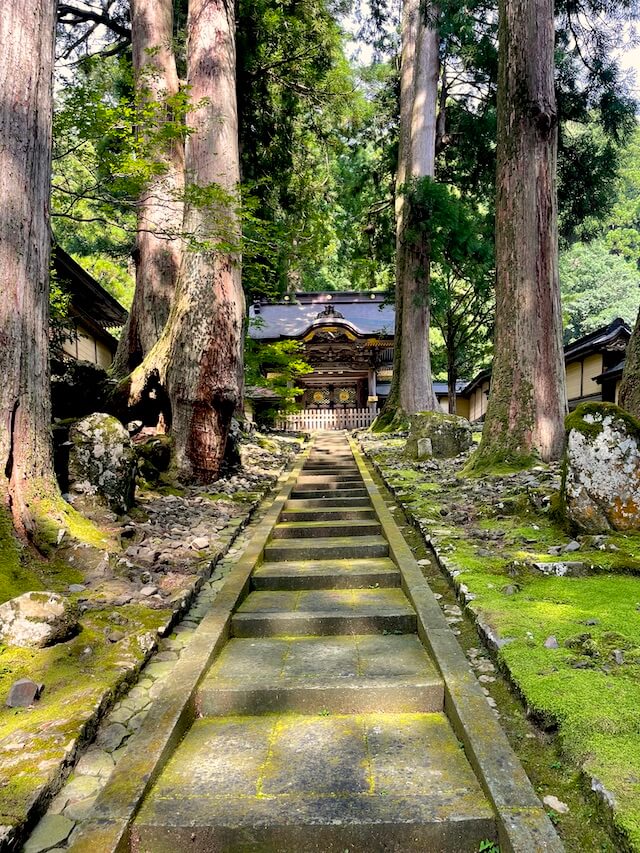
Eiheiji Temple, meaning “the Temple of Eternal Peace” is a large Zen Buddhism teaching temple and monastery complex located in Eiheiji, Fukui Prefecture. The complex consists of over 70 buildings and structures and spans over 330,000 square miles, and was founded in 1244 by monk Dogen Zenji. Walking onto the temple grounds you can feel the rich history by looking at the towering cedar trees overheard, or the soft green moss growing on and around the temple pathways. As this is still an active training and teaching temple, you can see many trainee monks walking around, and even try zazen yourself if you would like!
Information
- Price: 500 JPY/adult, 200 JPY/child
- Address: 5-15 Shihi, Eiheiji, Yoshida District, Fukui 910-1228, Japan (Google MAP)
- Hours: 8:30 am to 5:00 pm
- Visit Official Site
↑ Go back to the table of contents
Gokayama and Shirakawago (Toyama, Gifu)
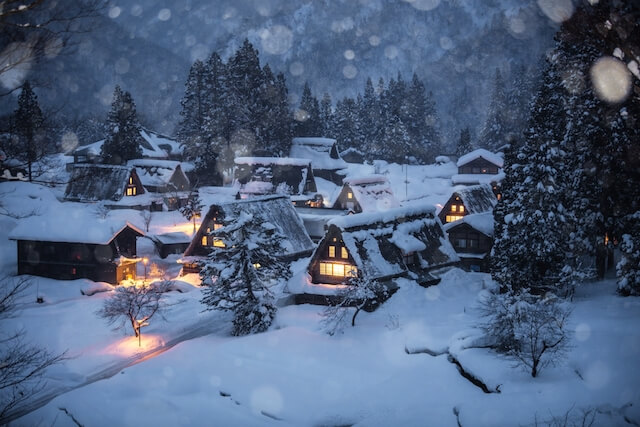
Gokayama, a region in Nanto city, Toyama Prefecture, along with Shirakawa-go in Gifu Prefecture (although not technically in the Hokuriku area, it is easily accessible from Kanazawa) make up the two areas on the UNESCO World Heritage site with their traditional style farmhouses “gassho-zukuri”. These houses are unique in their steep thick straw roofs which had been developed over hundreds of years to withstand the heavy winter snowfall in the region. These heritage sites are actually made of a collection of villages, each with its own charms. If a day trip isn’t enough, you can enjoy staying at one of the “gassho-zukuri” houses and see for yourself the charms of traditional Japanese living combined with the unique location and architecture of the area.
Information
- Price: –
- Address: The Gokayama area in Toyama has two villages; Ainokura and Suganuma (Google MAP of Ainokura)
- Address: The Shirakawago area in Gifu Ogimachi village (Google MAP of Ogimachi)
- Season: Year-round
- Official Site for Gokayama and Official Site for Shirakawago
- Cottage Rental in Gokayama
↑ Go back to the table of contents
Experiences in Hokuriku
Soba making
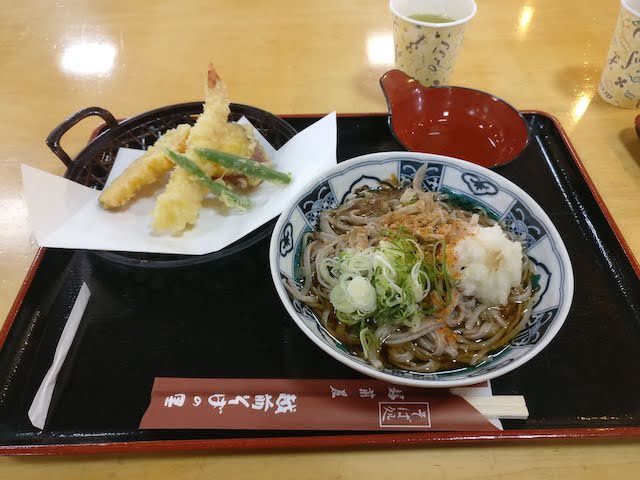
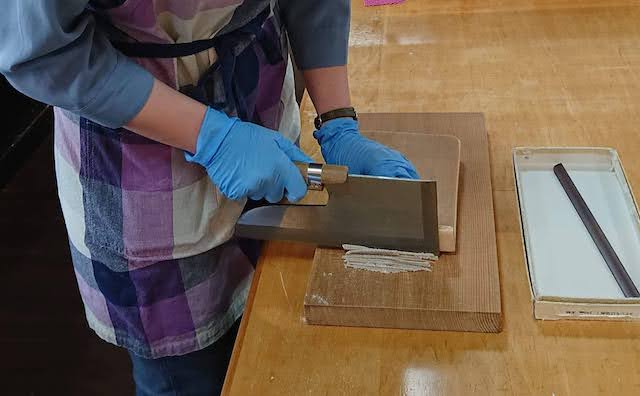
One of the famous local specialties of Japan, soba, also known as buckwheat noodles, is a very simple yet delicious and fulfilling dish. Fukui Prefecture is known for “oroshi soba” as they serve “oroshi daikon”, very finely grated Japanese radish over either hot or cold soba noodles. The oroshi daikon melts into the soup the noodles are served in, and provides a refreshing hint that partners perfectly with the buckwheat noodles. Fried shrimp and deep-fried tempura such as onion, eggplant, pumpkin, and more are often eaten as a side or topping. Another local favorite topping is “abura-age” a kind of deep-fried tofu that is eaten more in Fukui than in any other prefecture! So, for those ready to try this delicious and healthy dish, why not try making it yourself? You can go solo or bring your family to Echizen Soba-no-Sato to try your hand, maybe even have a competition to see who cut the best noodles.
Information
- Price: 1,800 JPY (plus 500 JPY for tempura side)
- Address: 7-37 Makaracho, Echizen, Fukui 915-0005, Japan (Google MAP)
- Hours: 9:30 am to 4:00 pm (Soba making has 2 times 10:00 – 11:30 am, 12:30 – 2:00pm OR take home soba only from 3:00 pm to 4:00 pm)
- Official Site (Japanese)
↑ Go back to the table of contents
Echizen Washi making
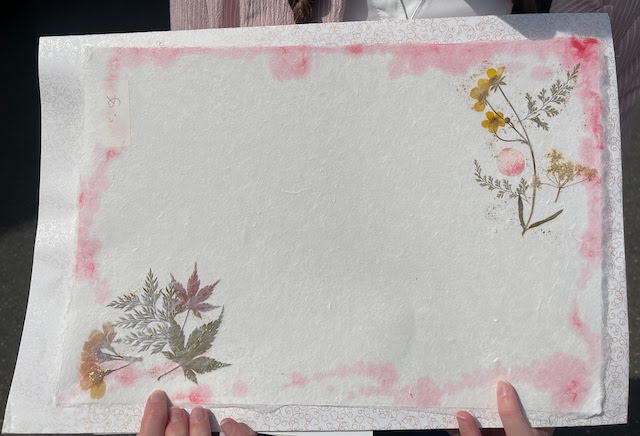
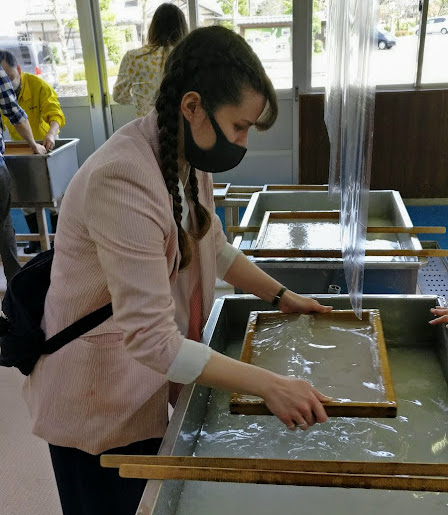
Echizen, Fukui, is one of the largest remaining handmade paper industries in Japan, with history of making paper dating back to the 6th century. This paper is widely used throughout Japan and has a look and texture unique to “washi” (Japanese style paper). The washi paper-making industry is so important that there is even a dedicated shrine, Okamoto Otaki Shrine (which is actually two combined shrines) for washi paper right in Echizen. You can not only visit this holy paper shrine and learn more about the history behind it, but also see the various methods and factories still producing Echizen Washi today, and even give making it a try yourself at the Papyrus House!
Information
- Price: Papyrus House Admission: Free. Paper and Culture Museum and Udatsu Paper and Craft Museum: 200 JPY for 19 and over (high school and below is free)
Paper making: from 500 JPY to 1000JPY depending on paper size - Address: 8-44 Shinzaike-cho, Echizen City, Fukui 915-0232, Japan (Google MAP)
- Hours: 9:00 am to 4:00 pm (Closed on Tuesdays and from 12/28~1/4)
- Official Site (English) and Official Site (Japanese)
↑ Go back to the table of contents
Japanese knife making
Japanese knives are some of the most famous and high-quality blades in the world, in particular, Echizen Knives are renowned both within Japan and globally due to their light and thin blades that remain sharp for a long time. With history of knife making dating back to hundreds of years ago, knives from Echizen are painstakingly forged using traditional Japanese techniques, both beautiful in appearance and function. In Takefu Knife Village in Echizen Fukui, you can enjoy learning about the history of knives of the area, go on a factory tour and watch expert craftsmen, and even make your very own!
Information
- Price: starting from 1000 JPY/person (Knife Making)
- Address: 22-91 Yokawacho, Echizen, Fukui 915-0031, Japan (Google MAP)
- Hours: 9:00 am to 5:00 pm (Closed Mondays) (Crafting requires reservation in advance)
- Official Site and Site for Knife-Making
↑ Go back to the table of contents
Wakasa lacquered chopsticks making
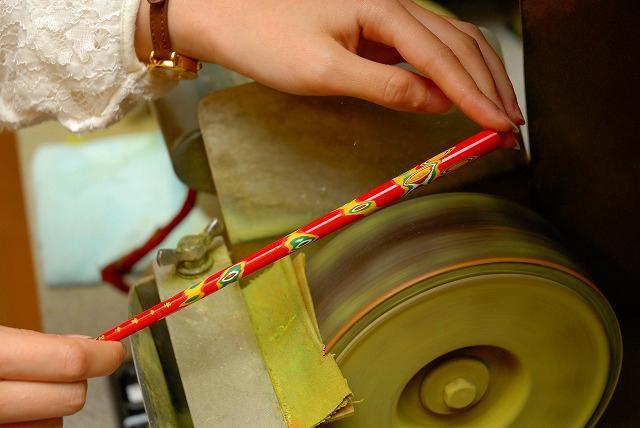
Wakasa, Fukui has a long history of making beautiful wood lacquered bowls, plates, wooden chests, and more, but the wooden lacquered chopsticks are particularly unique and special due to their multicolored layers and inlaid mother-of-pearl designs. While you might think lacquered chopsticks are only ornamental, they actually have antibacterial and antiseptic properties and are very durable. Recently, a new type of lacquer has been developed to be dishwasher safe, “MR Urushi”. There are also many synthetic lacquered chopsticks for those more new to Japanese chopsticks, or who want to use them daily and are worried about hand-washing. At the Wakasa Chopstick Museum, you can see over 3000 traditional Wakasa style lacquered chopsticks, as well as make a pair for yourself or as a great souvenir for friends and family.
Information
- Price: Free Admission to Museum. Chopstick Making: starting from 500 JPY
- Address: 8-1-3 Fukutani, Obama, Fukui 917-0001, Japan (Google MAP)
- Hours: 9:00 am to 5:00 pm (9:00 am to 4:00 pm Sundays/Public Holidays) Closed Thursdays
- Official Site (Japanese)
↑ Go back to the table of contents
Castles of Hokuriku
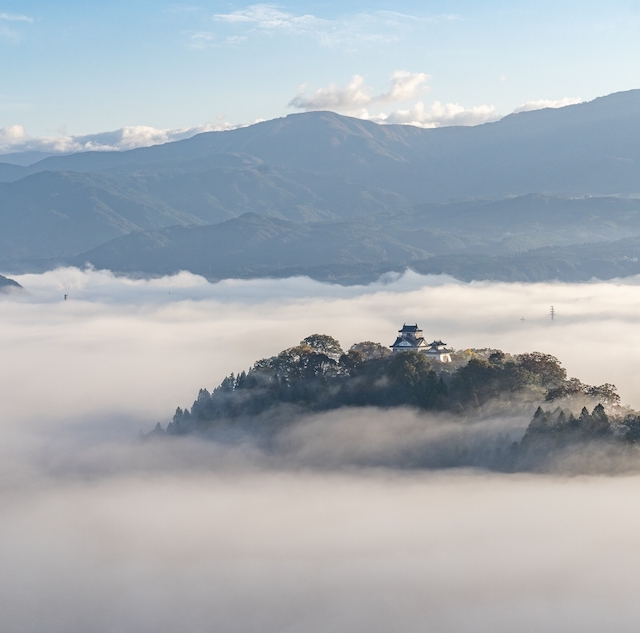
Castles in Japan are a huge part of Japanese history and architecture, and the castles in the Hokuriku Area are just as beautiful and inspiring as the rest of Japan. While you are in the Hokuriku Area, why not go on a Castle Tour? The top castles of the Hokuriku area are Toyama Castle, Kanazawa Castle, Maruoka Castle, Echizen Ono Castle, and Katsuyama Castle. The Castles offer beautiful views during the soft early morning light with the cherry blossoms floating all around, during the cooling summer sunset hours with the rice fields blowing in the wind, on cold snowy winter days where snow has piled up high and looks like a winter wonderland among the roof tiles, and amongst the colorful autumn maple leaves in the fall. Each castle is different and has its own secrets to tell, so don’t waste any more time and go see for yourself!
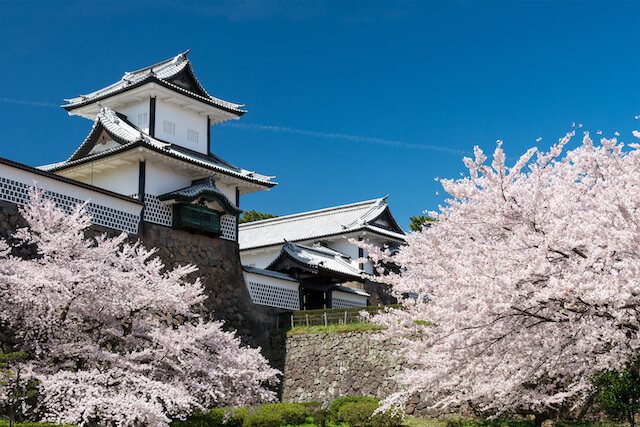
Cherry Blossom Viewing at Kanazawa Castle, in Ishikawa Prefecture.
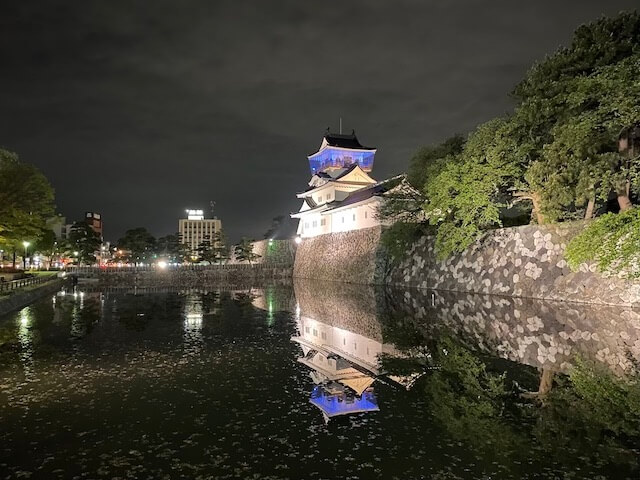
The illuminated night view of Toyama Castle.
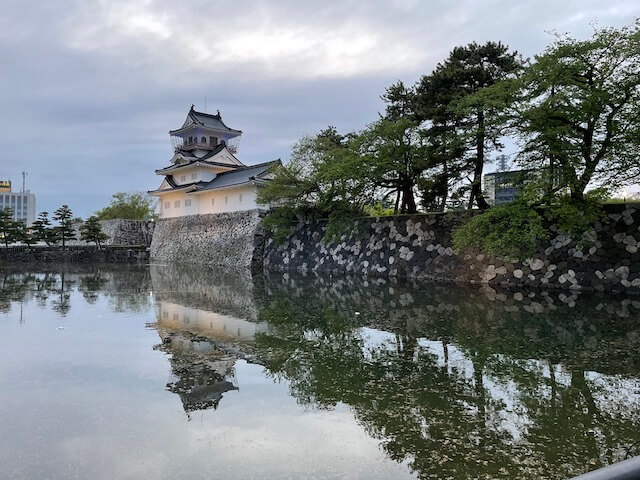
Daytime view of Toyama Castle.
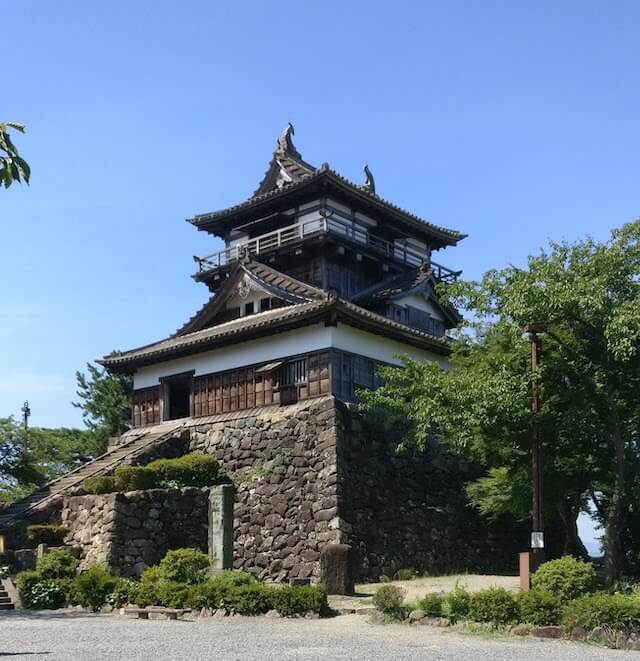
Daytime view of Maruoka Castle, in Fukui Prefecture.
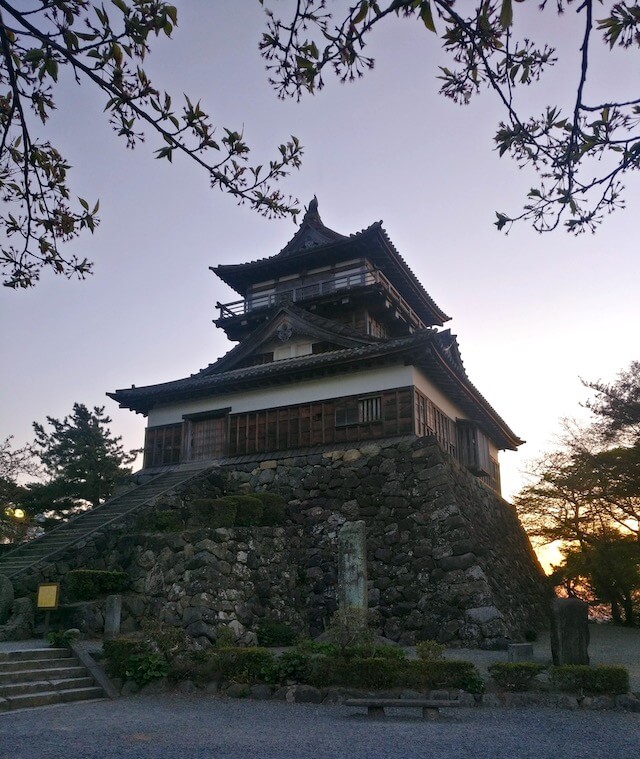
Evening view of Maruoka Castle, in Fukui Prefecture.
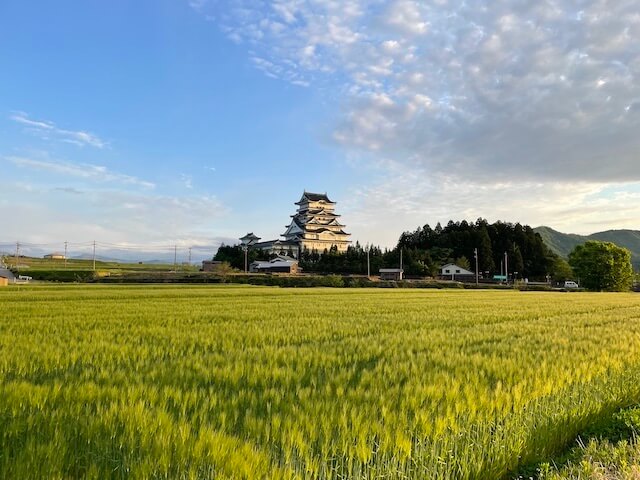
Daytime view of Katsuyama Castle, in Fukui Prefecture.
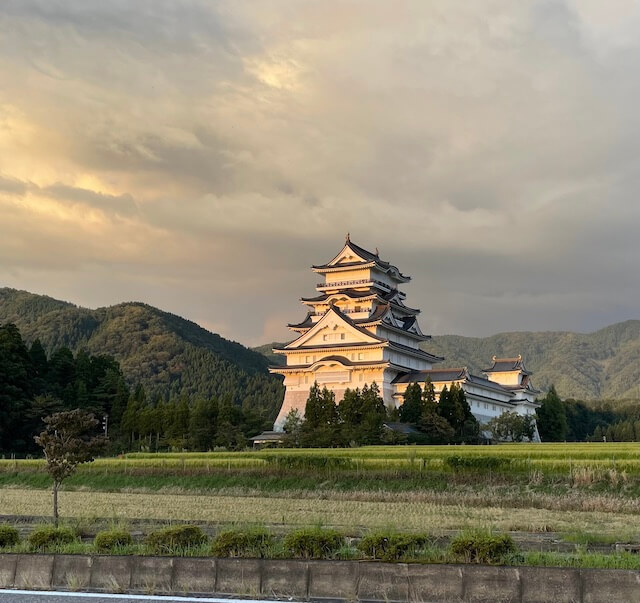
Evening view of Katsuyama Castle, in Fukui Prefecture.
Information
- Toyama Castle Address: 1-62 Honmaru, Toyama, 930-0081, Japan (Google MAP)
- Hours: 9:00 am – 4:30 pm
- Price: –
- Kanazawa Castle Address: 1-1 Marunouchi, Kanazawa, Ishikawa 920-0937, Japan (Google MAP)
- Hours: 8:00 am – 5:00 pm
- Price: –
- Maruoka Castle Address: 1-59 Kasumicho, Maruokacho, Sakai, Fukui 910-0231, Japan (Google MAP)
- Hours: 8:30 am – 5:00 pm
- Price: –
- Echizen Ono Castle Address: 3-109 Shiromachi, Ono, Fukui 912-0087, Japan (Google MAP)
- Hours: 9:00 am – 5:00 pm
- Price: –
- Katsuyama Castle Address: 85-26-1 Heisenjicho, Katsuyama, Fukui 911-0822, Japan (Google MAP)
- Hours: 8:00 am – 5:00 pm
- Price: –

